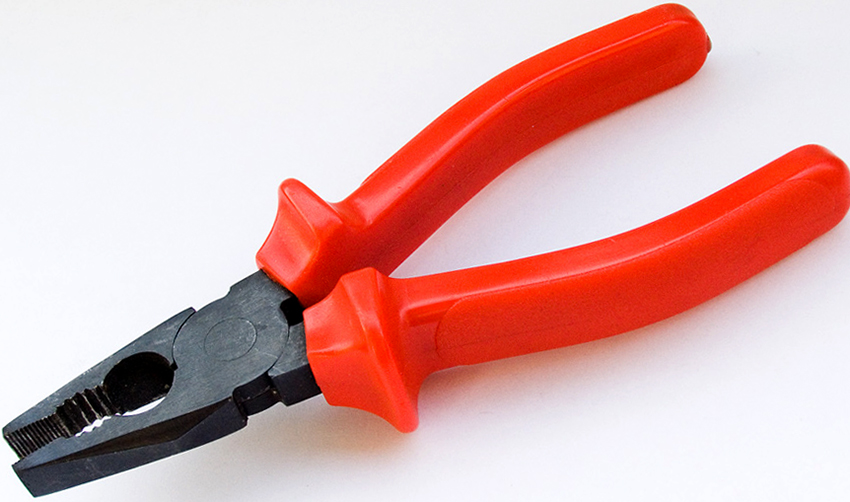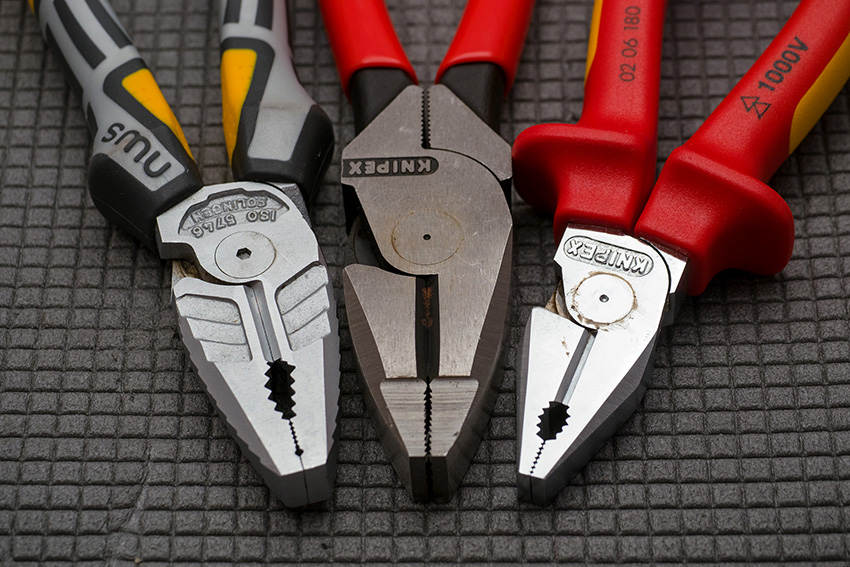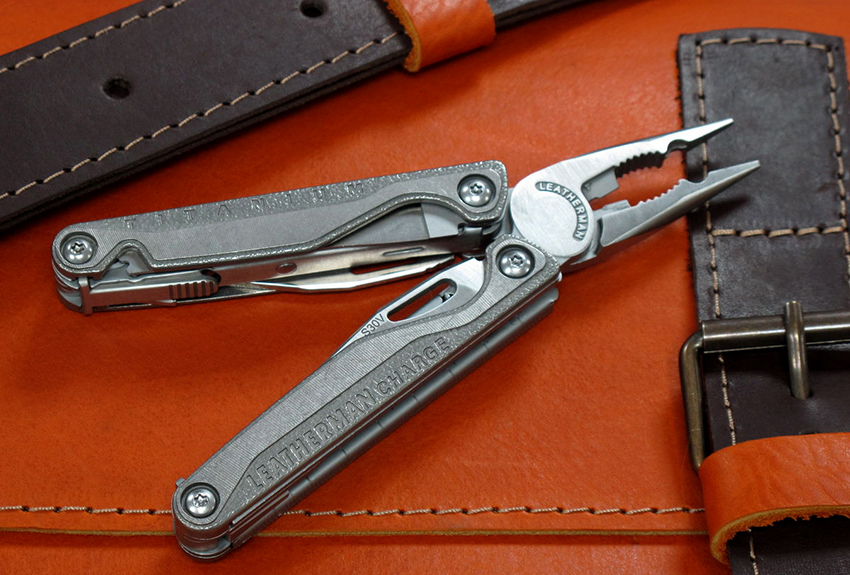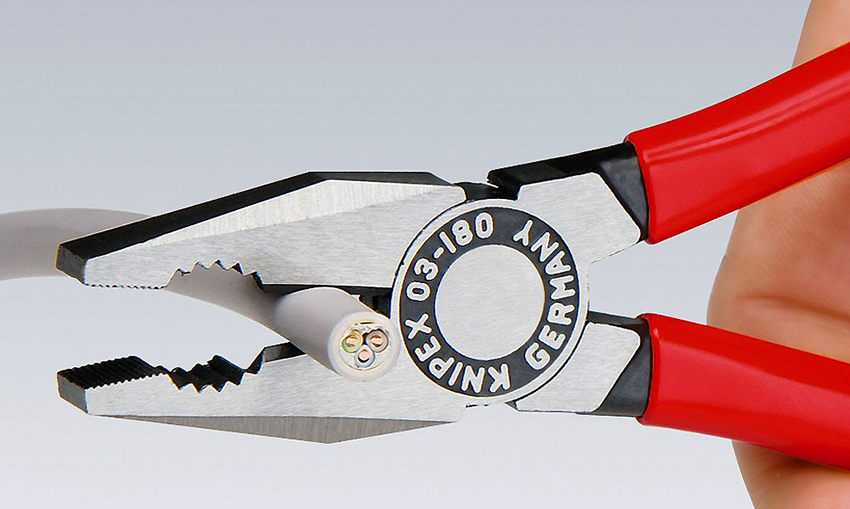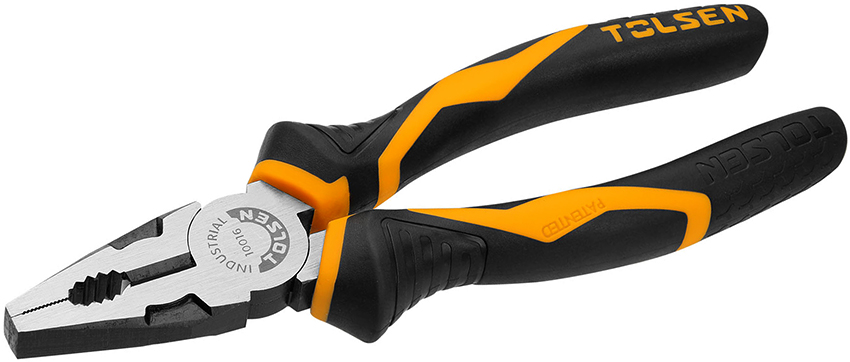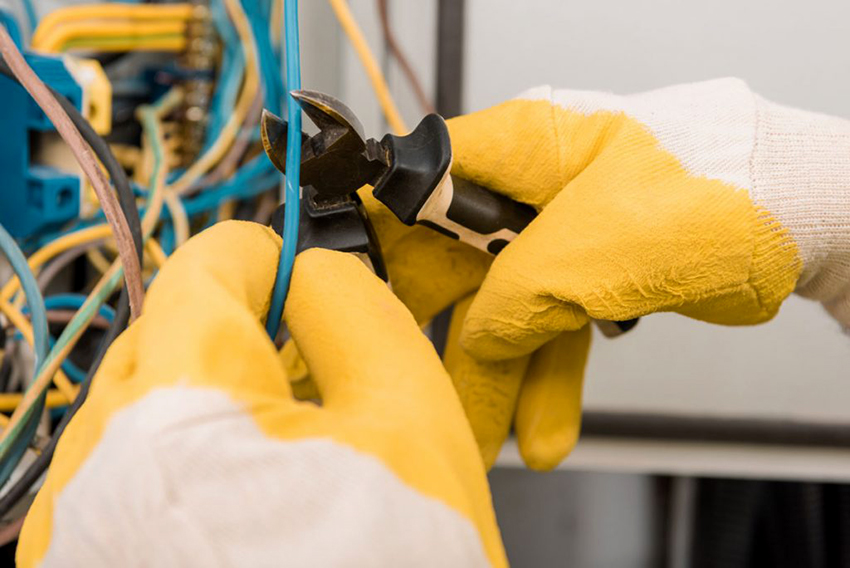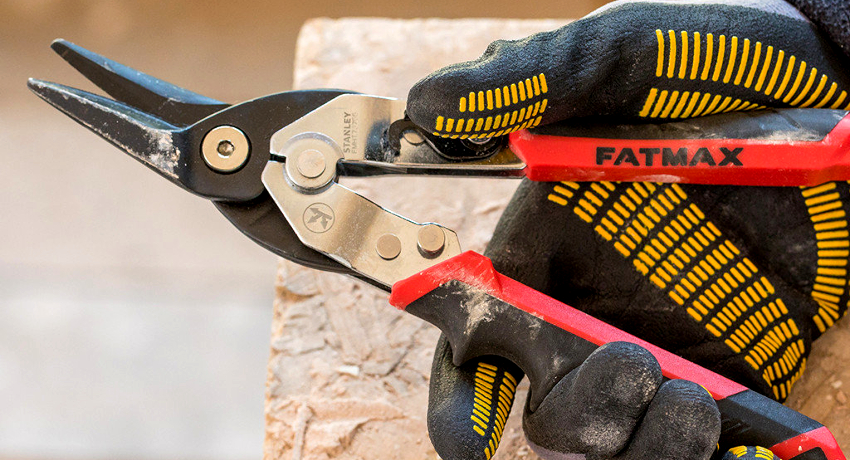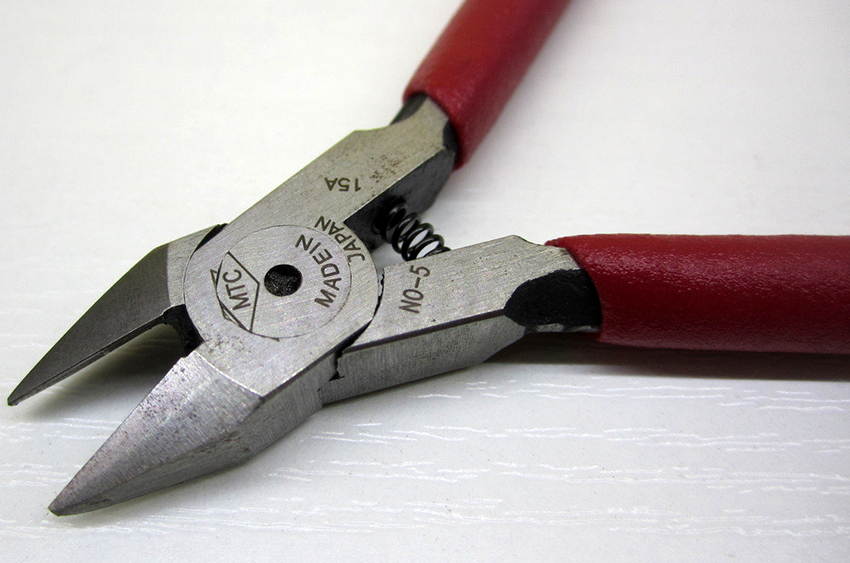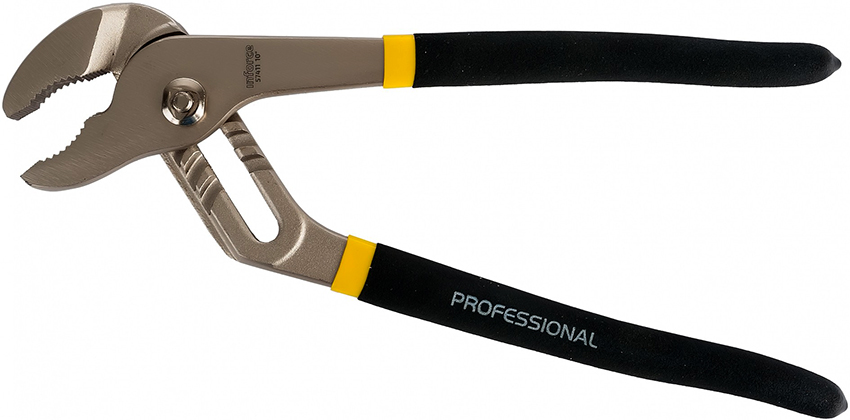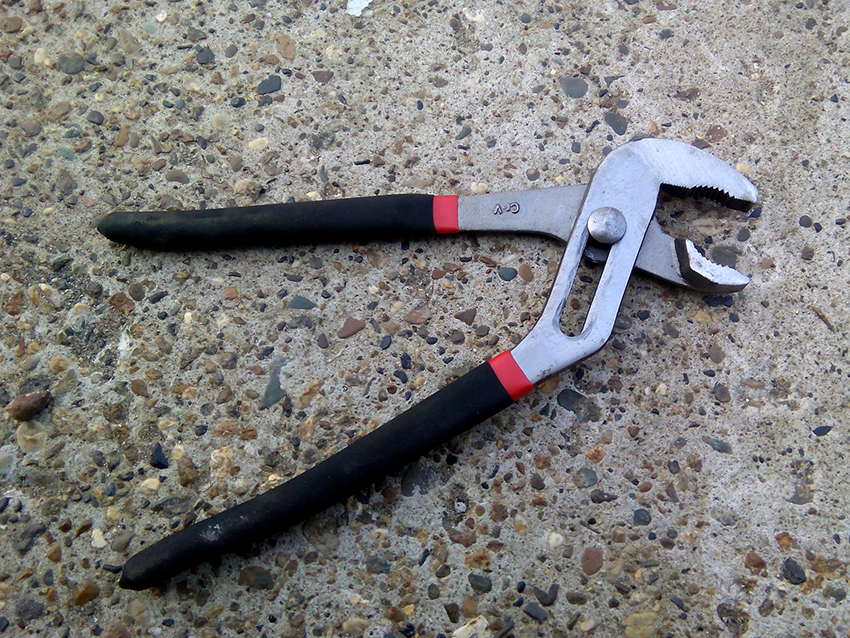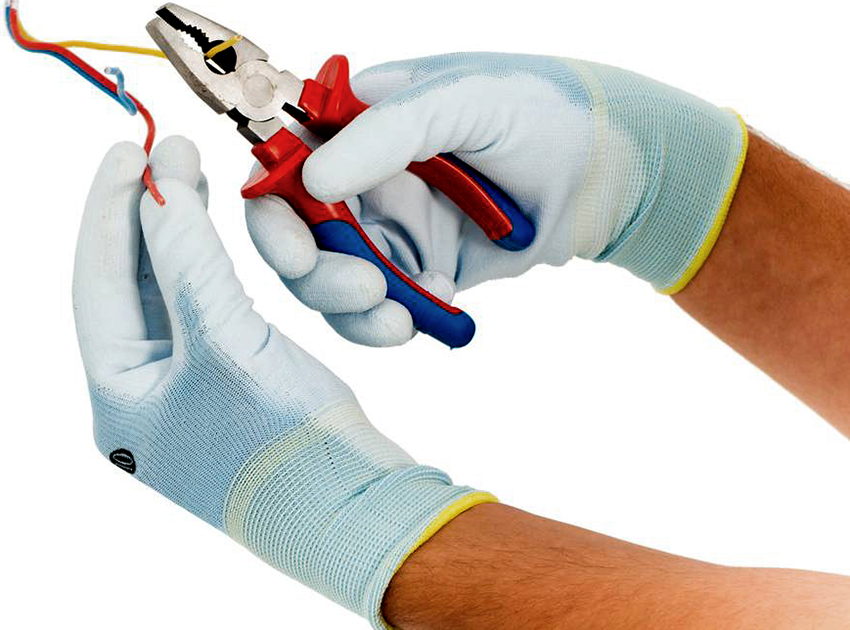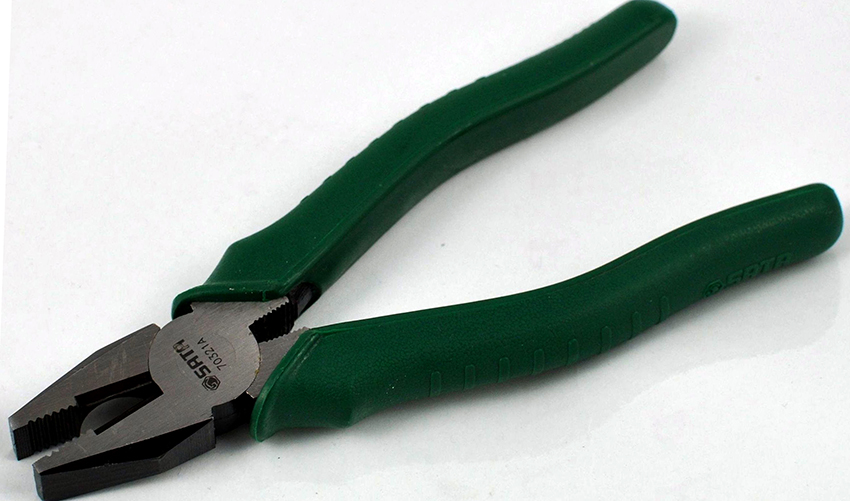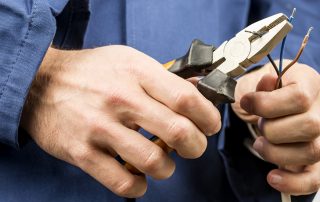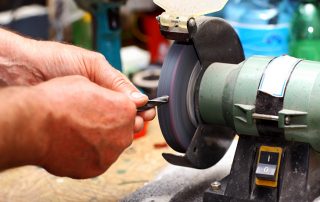Being an irreplaceable attribute of electricians and occupying a worthy place in the working suitcases of mechanics, as well as many other craftsmen, pliers and pliers have deservedly received the title of the most popular tools. However, no one really notices the differences between them, since the instruments are very similar in appearance. But there are still differences, and quite significant ones. After all, it is not without reason that each of them has separate technical requirements and GOSTs.
Content [Hide]
- 1 Pliers and Pliers: What is the Difference Between Pliers Variations
- 2 What pliers are for: secrets of tool functionality
- 3 Pliers: photo and a few words about the types of products
- 4 Pliers: the embodiment of practicality and versatility
- 5 Professional side cutters: little helpers for big tasks
- 6 Goebbels: features and distinctive features of the instrument
- 7 Pliers and Pliers: Secrets of Good Choice
Pliers and Pliers: What is the Difference Between Pliers Variations
The history of the appearance of devices of this group goes back at least to the era of the Greek gods. From time immemorial, the blacksmith's ticks are familiar to mankind. Over time, changes took place not only in human society, but also in instruments. It is not known exactly when and by whom the drawing of pliers, which are the prototype of modern products, was created. However, the indisputable fact is that the thing turned out to be incredibly practical and necessary.

Many people do not see the difference between pliers and pliers, as they look very similar in appearance.
Modern pliers are very versatile. The main variations that are brought to the attention of consumers are:
- ticks;
- round nose pliers;
- nippers;
- pliers;
- pliers.
Each of the above categories has subspecies that differ in such parameters as the size of the working surface, shape, and also purpose. For example, round-nosed pliers do the best job of stripping cable cores.
It is interesting! Conical shape of the tool provides comfort during bending of cable cores.
Different shapes of the cutting part and its different dimensions dictate the features of the operation of the nippers. For example, products designed for the repair of electronic devices are smaller. You should be aware that they are absolutely not suitable for cutting cables for different purposes, since this is inconvenient and impractical.
To perform work related to delicate materials, special attachments are used - plastic or made from other raw materials. The presence of notches on the round-nose pliers allows fixing the part with maximum reliability during the soldering process. At the same time, the special shape and angle of inclination of the jaws make it possible to wade into the most inaccessible areas.
How pliers differ from pliers: the main parameters of tools
According to the interpretation of GOST, pliers are a tool designed to grip and clamp pipes and parts of various shapes. Externally, the products are very similar to pliers. They are equipped with flat jaws, which are a continuation of the working area for gripping bolts or tubes. In addition, the presented tools are most often endowed with side cutters to remove insulation.
Let's take a closer look at what is the difference between pliers and pliers. The following features of these tools should be noted:
- the ability to adjust the clearance of the working surface of the jaws and the degree of force of the product by rearranging the hinge is provided only for pliers;
- pliers are tools designed to perform only one action, while pliers are multifunctional products;
- pliers are equipped with wire cutters for cutting thin wire; high-strength steel is used in their manufacture;
- pliers are often characterized by a flat working surface with a notch along the entire length.
It is interesting! Combination pliers 200 mm can also be found on the modern market, but this is more the exception than the rule.
In addition, it should be noted that the design of the pliers is designed for greater compression force. This means that the manufacturers select the appropriate grade of material for these products - exactly the one that is characterized by a greater degree of strength.
Perhaps the most significant difference between pliers and pliers is that the former provide the ability to solve a larger number of different everyday tasks. In many ways, they can be an excellent replacement for end cutters, small household vices or side cutters, gripping almost any small object.
What pliers are for: secrets of tool functionality
This type of tool belongs to the group of fittings and assembly products. Speaking about what the pliers are made of, it is worth noting that their design is quite simple and is represented by the so-called sponges and handles. Thanks to the sponges, which have a rectangular cross-section and a pyramidal shape, they can grip various objects or bend metal elements.
In accordance with GOST, pliers are produced in several variations:
- with short and long jaws - in the range from 25 to 55 mm and from 50 to 64 mm, respectively;
- with standard handles and insulating elements that enable high voltage work.
As for the total length of the tool, it is in the range from 12 to 22 cm. At the same time, in the manufacturing process, high-quality tool steel U7A is used, which has undergone full hardening. Finished products are subjected to anti-corrosion treatment by chromium plating, chemical oxidation or phosphating. The shade of the tool directly depends on the processing method - it can be metallic, matte gray or black.
Speaking about the types of pliers, it should be noted that, in addition to the classic samples, there are also other variations on the market intended for work of a particular nature.For example, the so-called "platypuses" are pliers with elongated elements that resemble tweezers. At the same time, thanks to the powerful handles, they are characterized by high pressing force. There are also products with curved jaws, which will be an excellent solution for performing work in hard-to-reach places.
Pliers: photo and a few words about the types of products
In addition to the above options, other types of products are no less popular. These include:
- adjustable;
- clamping;
- isolated;
- for wires.
Clamping pliers are jigs that function like a hand vise. Most of these instruments are equipped with an adjustable screw, which additionally acts as a lip clamp, thus increasing the pressure.
It is interesting! In addition to being used as clamps in various situations, clamping pliers are often used in the process of welding.
Adjustable pliers are another essential tool in every craftsman's kit. These products are ideal for pivoting and gripping a variety of objects, including nuts and bolts, by pivoting the lips. Due to their versatility, such tools can replace most wrenches.
As for the insulated pliers, they have rubberized grips, which act as a guarantee of safety during electrical work.
Pliers: the embodiment of practicality and versatility
Since the pliers (photos of products can be found on the Internet) are close "relatives" of the pliers, they are very popular in the process of performing both plumbing and electrical installation, and many other types of work.
One of the main features of the pliers is the presence of a notch with notches on their working surface. This part is designed to grip and firmly hold smooth, round objects. Pliers often have a combined jaw surface. This means that in addition to the separate recess for round parts, there is also a part of the flat working area. In addition, some tools are equipped with multiple recesses for different sizes of workpieces.
It is interesting! Many people ask themselves how is it correct - "pliers" or "pliers"? According to the rules, you must use the second spelling.
A feature of adjustable pliers is that they allow you to adjust the compression ratio of the jaws. For this, their design provides for several variations in the location of the hinge in specially designed grooves. The process of rearranging it is quite simple, it boils down to spreading the handles and moving to the desired recess.
In addition to the compression ratio, it is also possible to adjust the distance between the edges of the jaws, thus expanding the range of dimensions of the objects to be gripped. Regardless of the price, the pliers are often equipped with side cutters. By means of these elements it is possible to perform stripping and cutting of wire or cable conductors. In addition, they can be provided with special edges on the face of the jaws, which makes it possible to cut hard wire.
Another parameter that determines the difference between pliers and pliers is the extended working area of the latter tools by equipping them with notches on the handles located immediately behind the hinge-type connection. This makes it possible to grip parts not only by means of jaws.
Note! To date, the special respect of many users has won the Knipex pliers, produced by the famous German company. These products are renowned for their high quality and reliability.
In addition, the pliers can be of both locksmith and electric type. In this case, the latest models must certainly be marked with a maximum voltage of 1000 V.
Professional side cutters: little helpers for big tasks
The most common cutting tools are the so-called wire cutters. In fact, these are side cutters-pliers, which are based on the principle of a lever. It is due to him that the force that must be applied to the surface of the workpiece increases in order to bite through the material through the cutting edges.
The main components of the wire cutters are:
- A handle that acts as a lever. It depends on its length what kind of effort the master will need to apply to carry out certain operations. Handles are often coated to provide comfort and protection during work.
- Cutting edges. These parts differ in size, shape and location in relation to the plane of the handles. In addition, you can find on sale nippers with victorious soldering, which will help to cope with even the most durable materials.
Related article:
Hand and electric metal shears: overview of cutting tools
Tool characteristics. Varieties of devices based on the principle of operation and design. Review of models.
The assortment of the modern market of tools is represented by various models of side cutters. For example, precision products are intended for precise work, dielectric ones provide the ability to work with wires under voltage up to 1000 V, and reinforced ones will cope with the task of cutting metal, reinforcement and wire with a diameter of more than 3 mm.
A feature of diagonal tools, which are used for cutting steel and copper wires, is that their heads are located at a certain angle to the surface of the handle. Professional models are made from tool steel, which undergoes multi-stage hardening. The two working sections of the presented devices are connected to each other by means of a hinge on the axis, which is capable of withstanding a monotonic load within 75 kg.
Secrets of choosing side cutters: how to avoid mistakes
Before embarking on the process of selecting tools, you should clearly define what they will be used for. For use in a household, classic small side cutters are quite suitable. Through them, it will be possible to repair electrical wiring, cut wire, and also strip cables. If the tools are necessary for professional use, each craftsman focuses on personal needs.
In addition, you should pay attention to the material that was used to make the working part. The cutting edges of products that deserve the right to be called high quality are made of hardened steel and therefore are characterized by unsurpassed strength. Even after work has been done with wire made of steel, it will hardly be possible to see jaggedness. Ideally, the working surface of any side cutter should have an anti-corrosion coating.
An equally important element that deserves special attention is the tool handle. The longer it is, the more effort will be required in the process of performing work.
Important! In order to prevent the hand from slipping at the most crucial moment, it is better to give preference to tools, the coating of the handles of which has a relief texture.
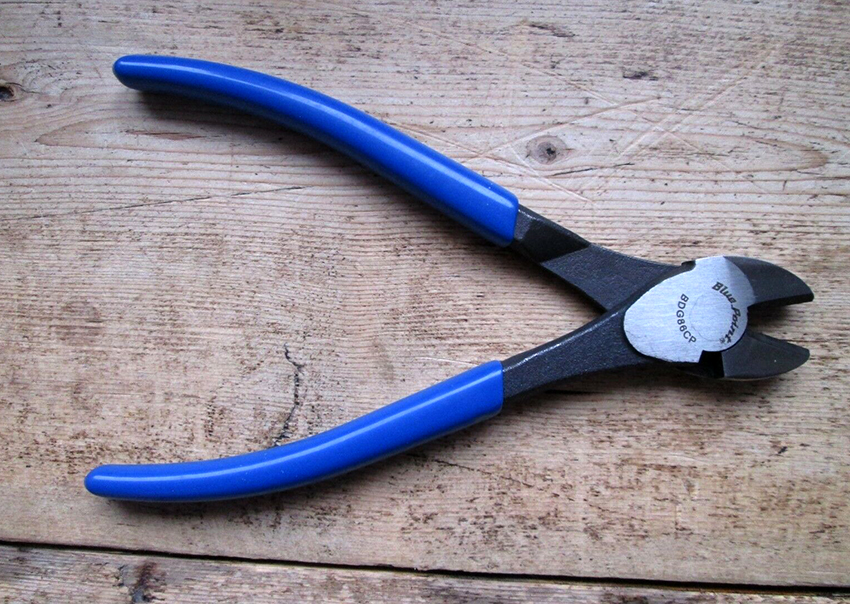
First of all, when buying side cutters, you need to pay attention to the material and length of the handle.
The handles of truly high-quality products are endowed with a coating that is characterized by resistance to temperature changes, as well as to oils and many other chemicals. Since this tool is designed for comfortable work in various conditions, all its elements must be as reliable as possible.
In conclusion, it is worth noting that side cutters (side pliers) are not a tool that cannot be replaced during home repair work. However, installers, electricians, and locksmiths who are often faced with the need to cut through cables, wires, nails and fittings will certainly appreciate their properties.
Goebbels: features and distinctive features of the instrument
Goebbels are a type of pliers used by both amateurs and professionals. They are often used in pairs, and in a wide range of tasks - from plumbing installation to vehicle repair.
According to the standard, all adjustable pliers are made of special tool steel, which is characterized by the presence of vanadium and chromium in the composition. This gives them the same qualities as wire-nose pliers, which allows them to work under tension. During their manufacture, not only stamping is used, but also forging elements. In this case, the key parts (head and fasteners) are sanded.
As for the handles, they often take up no more than 40% of the total length of the product. They are coated with a special compound that prevents slipping. This not only increases comfort while working, but also protects your hands from injury.
The head of the Goebbels, like a similar part of the pliers, is the part of the product that can have different levels of inclination, 90 or 45 degrees. Regardless of the value of this parameter, it is always quite narrow and relatively long. Due to the presence of a special recess in it, you can easily work even in narrow and inconvenient places.
Depending on their design, Goebbels are divided into two main groups:
- With rack-and-pinion type of jaw set. This structure is characterized by simplicity and reliability. It is represented by two parallel-fixed rails with teeth, between which the axis of the product can easily walk and can be fixed by the master.
- With grooves for spreading the lips. The design feature is the presence of an overhead milled cardan joint. For the purpose of spreading the sponges, rectilinear movements are used. The result is an attachment that prevents the hinge from slipping.
In the process of performing work at a significant height, the best solution would be to use a tool with a special loop designed to insure the wrist. Thus, the likelihood of the product falling at the most crucial moment due to a careless grip is excluded. When working with plastic pipes or ceramics, it is better to give preference to sponge nozzles, which will reliably protect the surface of the part from various damages.
Note! The modern market presents many models from various manufacturers. The well-known company for the production of professional goebbels and pliers NWS deserves special attention. The high level of quality of the brand's products is confirmed by the special Solingen label.
In addition, you can find products that are native to Sweden or Germany.They are also distinguished by high quality materials, ergonomics and modern design.
Pliers and Pliers: Secrets of Good Choice
At the first stage of the choice of tools, it is required to determine for the implementation of which tasks they are intended. This need is due to the fact that some models can be used to perform a variety of jobs, while other products are characterized by a narrower specialization.
Once the type of instrument has been identified, a little personal research needs to be done. To do this, you can read specialized reviews, watch videos, and compare pictures of pliers and pliers made by various companies. Among other things, it should be remembered that products can vary in metal composition, handle finishes, weight, grip comfort, performance and design.
Helpful advice! If material opportunities permit, it is better to give preference to professional tools.
And this is not a whim at all, but a real advantage of professional products over amateur ones. Surely it will be very annoying in the midst of work to be left without pliers or, after a dozen bit off pieces of wire, throw out the side cutters due to their unusability. As for the professional set of pliers, it will last a long time for everyday use.
In the selection process, the hinge also deserves special attention. There should be no backlashes on it. If the stroke is soft, smooth, the surfaces touch evenly, and the handles on the handles are securely positioned and there is no free sliding, it means that a truly high-quality product has been found.
In many cases, pliers can be a worthy replacement for other tools. Before you go shopping, you should be as clear as possible for what tasks you plan to use them.
The modern tool market has a huge range of pliers, the price of which varies depending on the type of product and the manufacturer. Thus, each master has the opportunity to choose the best tool that will become a reliable assistant in the process of performing certain works.

